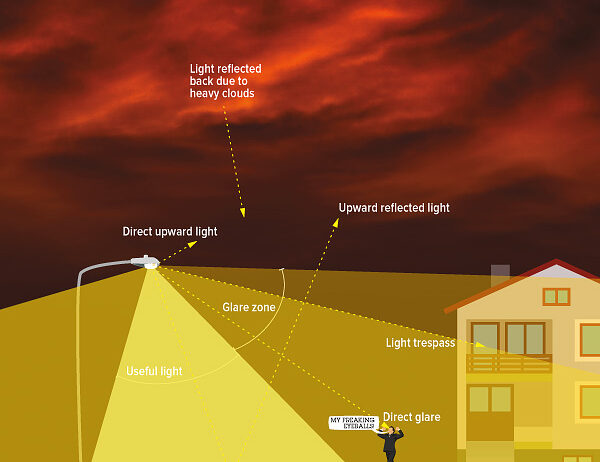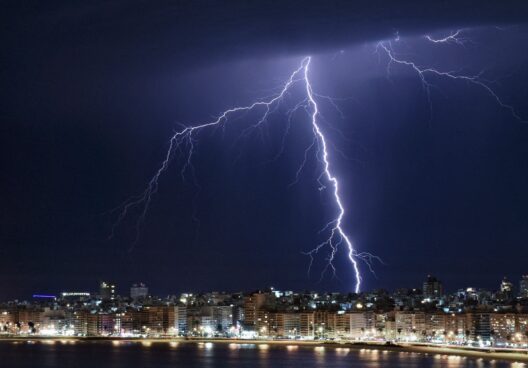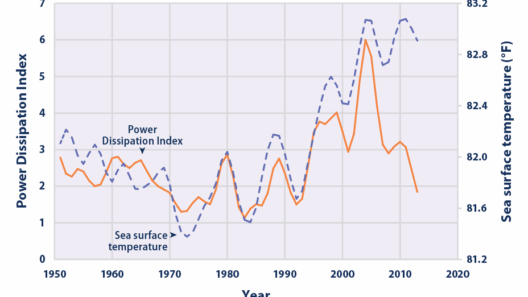Light pollution, a consequence of excessive artificial light, particularly in urban areas, has emerged as a significant environmental issue. While discussions around climate change predominantly center on greenhouse gas emissions, the role of light pollution in the broader context of global warming is often overlooked. This article delves into the multifaceted relationship between light pollution and global warming, exploring its dimensions and implications.
Understanding Light Pollution
Light pollution manifests in several forms, primarily categorized into three types: skyglow, glare, and light trespass. Skyglow refers to the brightening of the night sky over populated areas, obscuring the visibility of stars. Glare occurs when excessive brightness causes visual discomfort, while light trespass happens when unwanted artificial light spills over into areas where it is not needed or wanted. Each type of light pollution bears its own implications for both ecosystems and human health.
The Connection to Energy Consumption
One of the most direct links between light pollution and global warming stems from energy consumption. Urban areas are often illuminated with brightly colored and energy-intensive lighting, which increases the demand for electricity. A significant portion of this energy is derived from fossil fuels, which emit carbon dioxide and other greenhouse gases when burned. Thus, the more unnecessary lighting is used, the more these emissions contribute to global warming.
Mandating energy-efficient lighting solutions, such as LED technology, can mitigate both light pollution and the associated greenhouse gas emissions. Moreover, employing smart lighting systems that automatically adjust brightness levels based on light conditions can also help optimize energy use, further reducing the carbon footprint.
Impact on Ecosystems
The ecological implications of light pollution are profound. Many species, especially nocturnal animals, are adapted to natural light cycles. The disruption of these cycles can lead to altered behavior patterns, hindering reproduction and migration. For instance, sea turtles depend on the natural light of the moon to find their way to the ocean after hatching. Artificial lights can mislead hatchlings, resulting in reduced survival rates.
Moreover, light pollution disrupts the delicate balance within ecosystems. Predators that rely on darkness to hunt can find their strategies thwarted by excessive artificial lighting. This disturbance can cause cascading effects throughout an ecosystem, leading to fluctuations in population dynamics. These shifts, though indirect, may also influence carbon sinks, ultimately impacting climate regulation.
Health Concerns
Human health is not immune to the consequences of light pollution. Exposure to artificial light at night can disrupt circadian rhythms, leading to sleep disorders and various health complications, including obesity, anxiety, and depression. Sleep is essential for maintaining numerous physiological processes, and its disruption can exacerbate stress responses and compromise immune function.
Furthermore, the implications for public health extend beyond individual well-being. Increased stress levels and health issues can lead to heightened healthcare costs and reduced productivity, perpetuating a cycle of environmental degradation and social inequality. This indirect impact links light pollution to broader societal issues that are intertwined with climate change.
Climate Feedback Loops
Interestingly, light pollution intersects with various climate feedback loops. The urban heat island effect, in which urban areas become significantly warmer than their rural counterparts, is exacerbated by excessive artificial lighting. This phenomenon results from the heat generated by bright lights as well as the combined effect of concrete and asphalt surfaces retaining warmth. Higher temperatures can lead to an increase in energy consumption for cooling, further amplifying greenhouse gas emissions, creating a vicious cycle that accelerates global warming.
Additionally, the interplay between artificial light and the biological processes of plants and animals can trigger feedback mechanisms that alter greenhouse gas dynamics. For example, earlier blooming in plants due to artificial light can disrupt the availability of resources for pollinators, leading to reduced plant reproduction and lower carbon sequestration capacity. Such changes may not only affect local ecosystems but can also have global ramifications.
Reducing Light Pollution
Addressing light pollution requires a collective effort among individuals, policymakers, and urban planners. Governments can enforce regulations to limit excessive lighting in public places while promoting the adoption of dark sky initiatives. Public awareness campaigns can also play a crucial role in educating citizens about the benefits of reducing light pollution. Encouraging community involvement in initiatives to plant trees, which can also serve as natural shields against light, can help foster a sense of responsibility towards the environment.
Moreover, urban redesign strategies focusing on sustainable development should prioritize minimizing unnecessary lighting. Thoughtful architectural practices, such as shielding outdoor lighting to direct it downward rather than outward, can mitigate light pollution while enhancing public safety.
Conclusion
While light pollution may not seem as immediate a threat as greenhouse gas emissions, its implications for global warming are significant and multifaceted. From increased energy consumption to disruptions in ecosystems and human health, light pollution operates within a complex web of interrelated factors that contribute to climate change. Through collective awareness and action, it is possible to mitigate light pollution’s effects, ultimately fostering a healthier planet for current and future generations.








